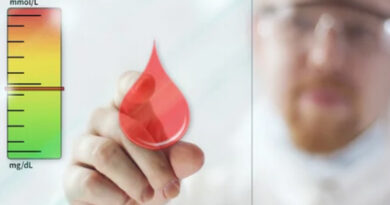An Overview of Treatment Strategies for Renal Failure
Renal failure is characterized by a loss in kidney function secondary to any number of conditions including diabetes, high blood pressure, congenital abnormalities, drug overdose, medication reactions, and many others. The fact that the kidneys are the primary means by which excess water and waste is filtered from the bloodstream means that a loss in capacity can quickly result in deadly accumulations of particles that harm vital organ systems. Fortunately, there are a couple of treatment options available to kidney failure patients that can dramatically improve their quality of life and increase the number of years they have on Earth. For those who plan to work in the dialysis industry as a technician, it is important to understand how the kidneys function and how dialysis works so that individuals are prepared to help answer any questions or concerns that patients might have.
Check out these related articles, too:
Renal Failure And Renal Diet – Save Yoursel!
Top 5 Symptoms of Diabetes What Can Be Done
Essential Travel Tips For All Diabetics
Normal Blood Sugar Levels With Healthy Eating Is It Possible?
Eating Antioxidant Foods Keep Normal Sugar Levels
The Scary Effects of High Blood Sugar
High Morning Blood Sugar and The Dawn Phenomenon
The kidneys are situated in the lower rear quadrant of the abdominal cavity in front of the lower set of ribs. These anatomical structures are about the size of a fist and they contain a complex network of tubes that are designed to facilitate the filtration of excess water and waste from the blood as well as the absorption of nutrients that are unintentionally filtered. Included in the body’s vascular system is a renal artery and renal vein that are responsible for directing blood to the kidneys and carrying it from the kidneys back to the main circulatory system. Each time the heart contracts, blood passes through the complex vascular system within the kidneys and is exposed to permeable membranes that contain pores just large enough to allow water and waste particles to pass through. The filtrate is collected by the kidneys and sent to the bladder where it is stored as urine until it can be excreted.
When the kidneys become damaged, they can no longer filter potentially harmful particles from the blood like they could when they were fully functional. If the loss in kidney function exceeds a certain percentage, individuals start to experience uncomfortable signs and symptoms of kidney failure such as water retention, nausea, and skin irritation. At this point, it becomes important to start considering treatment options that can partially compensate for the loss in the body’s ability to get rid of molecules that it no longer needs and that could harm important organs. The two most common treatment options for renal failure include a kidney transplant and dialysis therapy. Because spare kidneys can be difficult to find, most patients are dependent on dialysis for survival while they wait for a donor kidney.
Dialysis is a medical procedure that uses a machine to recreate the filtration mechanism found in a healthy kidney. Prior to beginning the treatment process, a dialysis patient must have a special vascular access point known as a fistula or anastomosis created just under the skin. This access point is used to connect the patient to the tubes that are used to carry blood from the body to the machine and back to the body. During each treatment, the patient sits for many hours as the machine cleans the blood and adds essential nutrients that the patient may be lacking. While the machine does do a decent job of replacing a portion of the filtration capacity of the kidneys, it cannot fully compensate for the loss in function and is dependent on the patient’s compliance with a strict renal diet for optimal health outcomes.
Some renal failure patients are eligible for an alternate self-administered form of treatment known as peritoneal dialysis. This approach to cleaning the blood uses the vascular system inside the abdominal cavity to filter excess water and waste. Individuals who qualify for this approach to therapy must have a tube surgically implanted in the abdominal wall so that filtration fluid can be added and removed. The most concerning risk factor associated with this type of dialysis is the possibility of the surgical site becoming infected. If this happens, the patients may suffer from adverse side effects and may be required to return to a clinic for ongoing treatment.
The dialysis industry has been growing rapidly over the past several years because of the increased number of people who suffer from kidney failure. Individuals who are compassionate towards others and who want to help people lead happier and healthier lives are encouraged to visit http://www.dialysistechniciansalary.org/ where they can learn more about a career as a dialysis technician. The medical industry is in desperate need of qualified individuals who have a positive attitude toward patient care and who have a passion for working hard.
Article Source: http://EzineArticles.com/8130777




